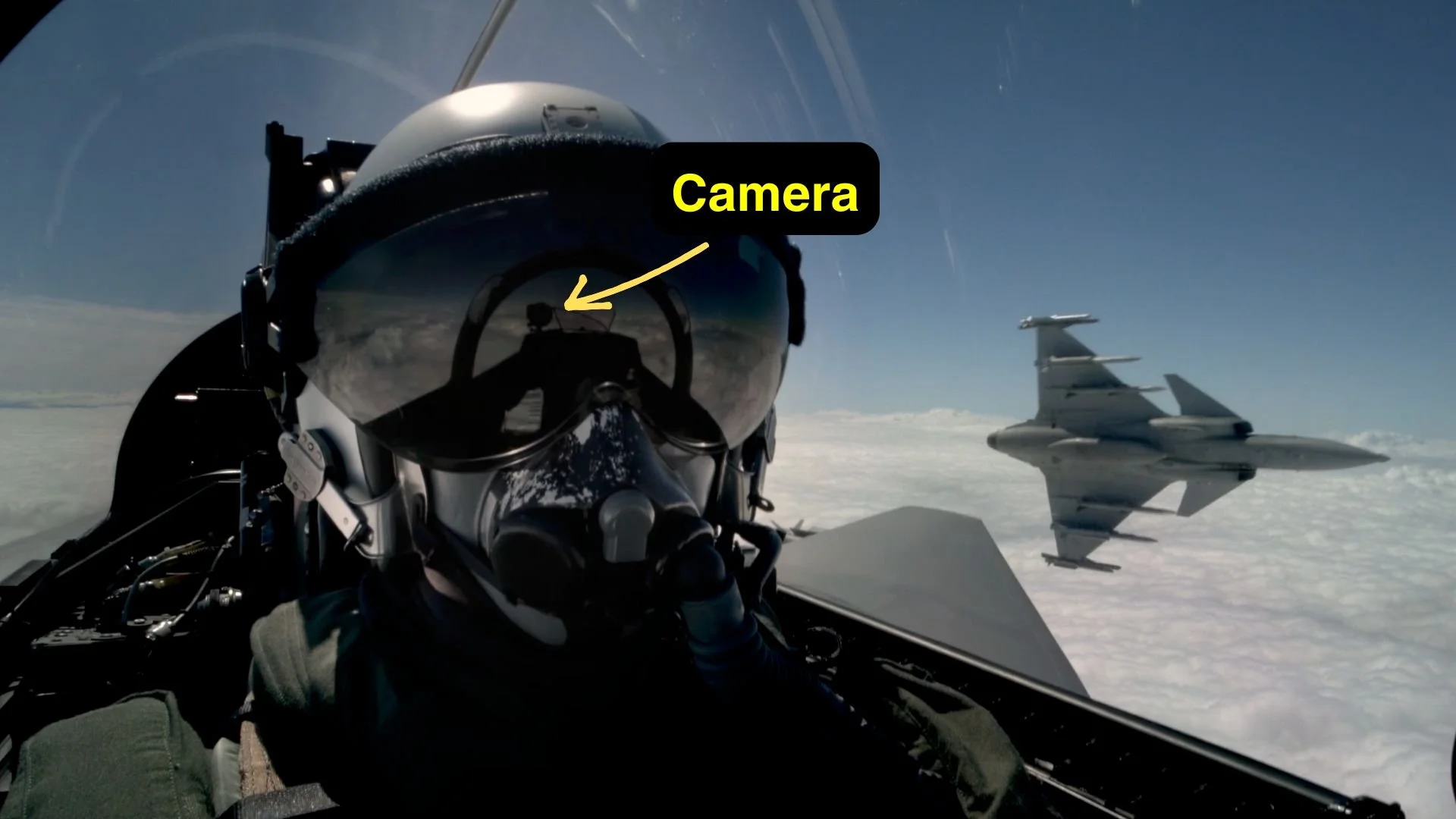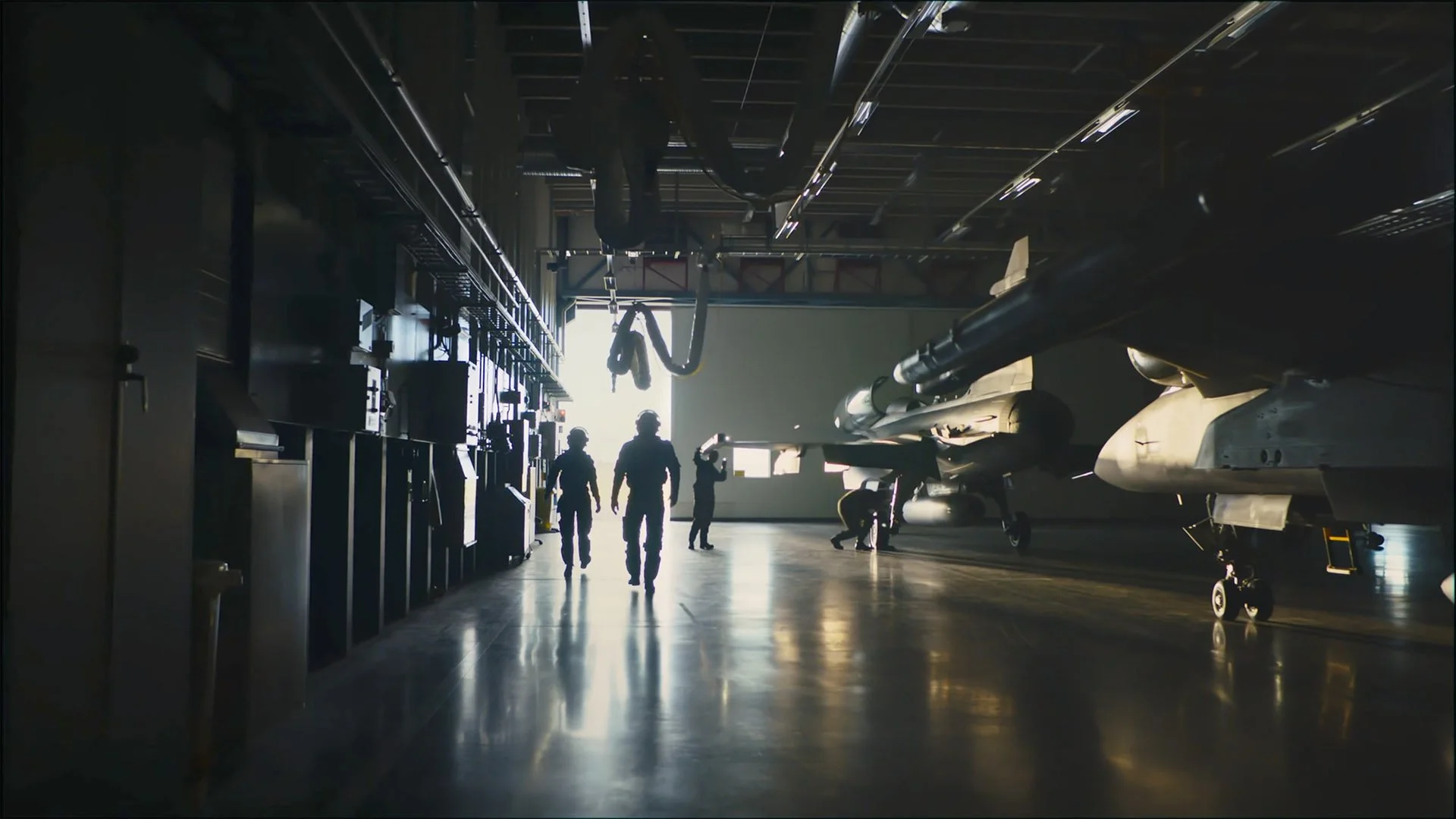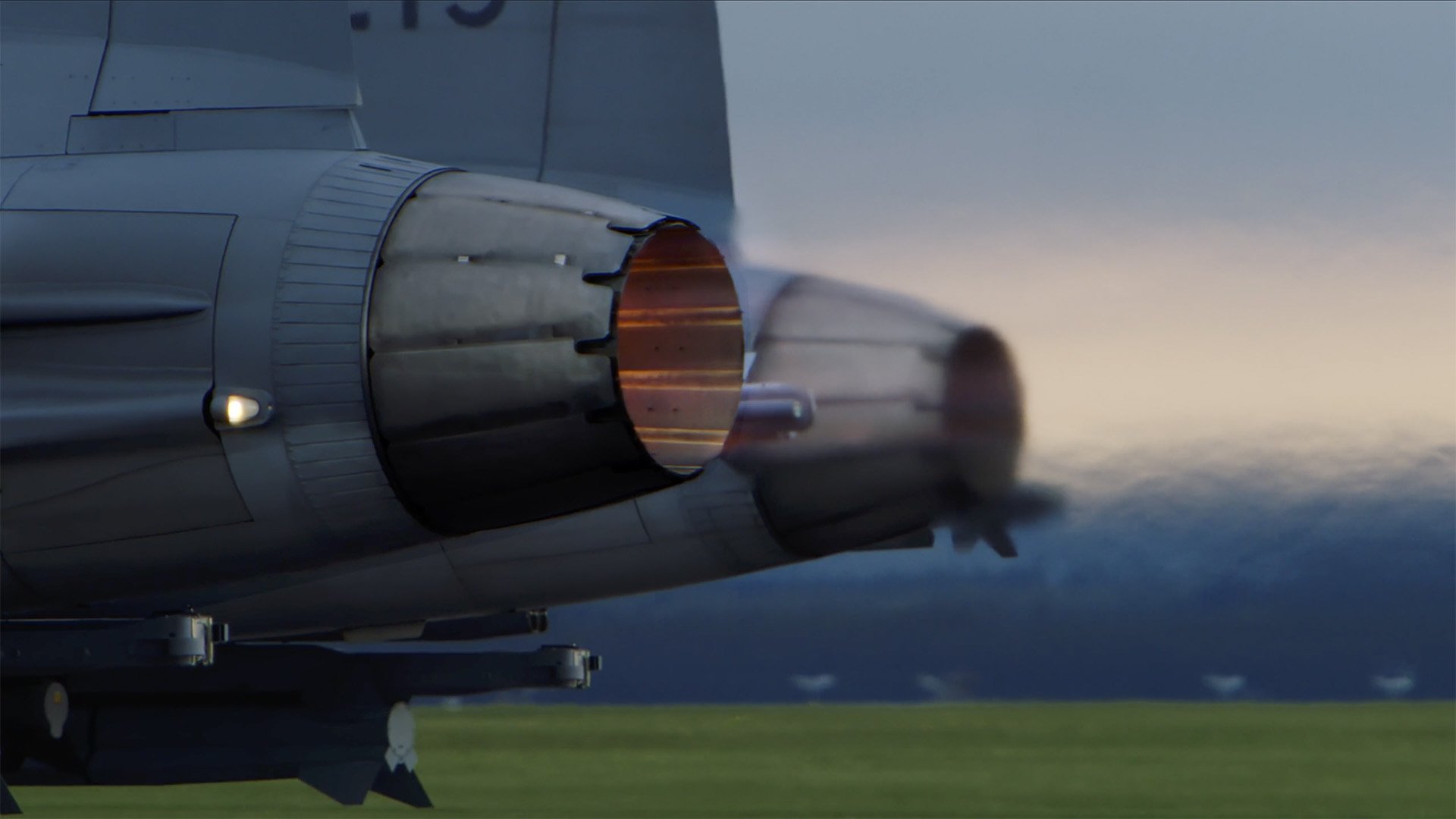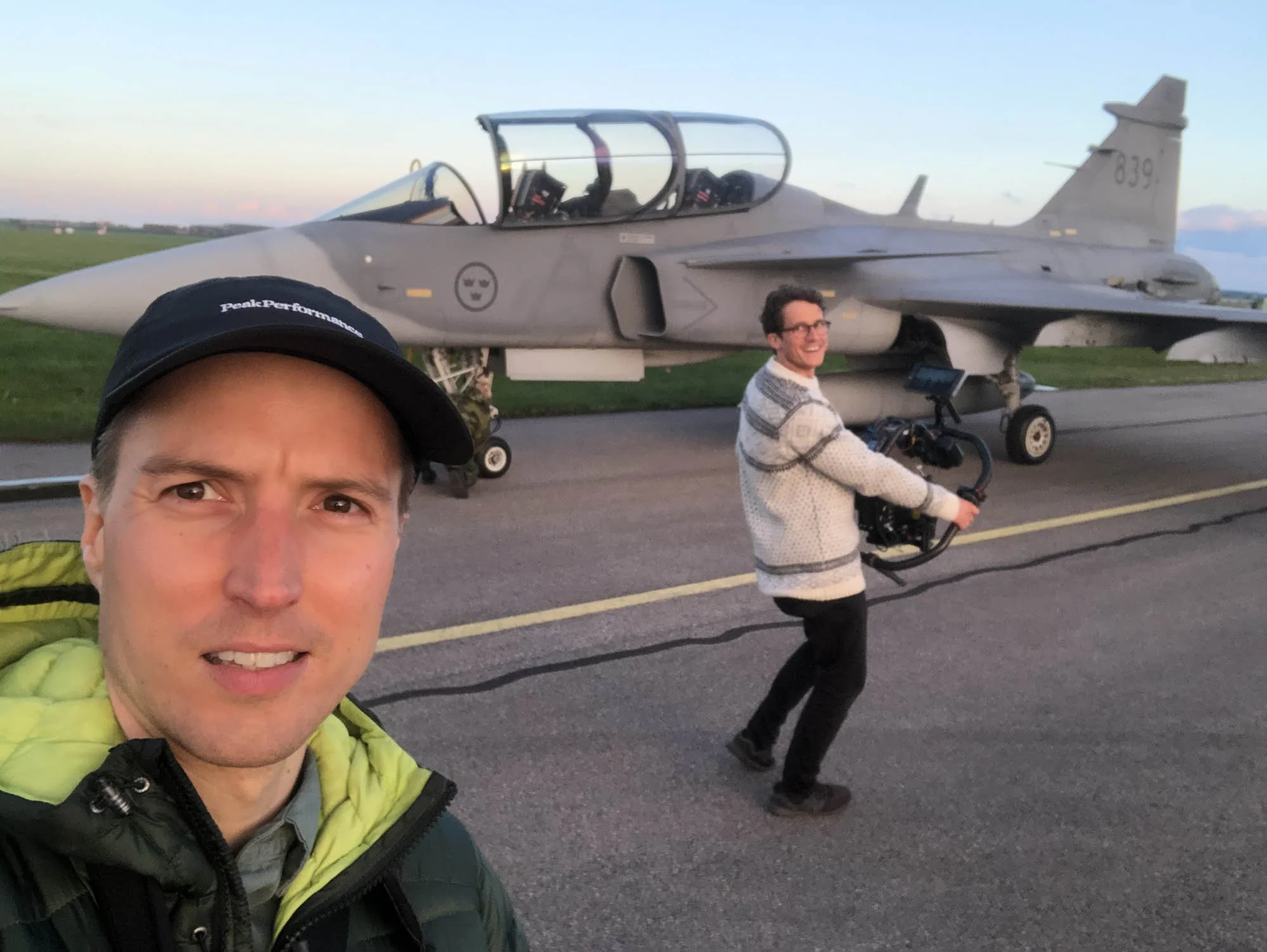I Trained a Fighter Pilot to Be a Filmmaker
You can see the camera in the visor in this picture.
A “no” is just the beginning.
In film production, they always show up:
“No – that’s not possible.”
“No – there’s no money.”
“No – there’s no time.”
The Dream Job – With a Big “No”
I got the chance to make a commercial with fighter jets. A dream job!
The agency’s brief was all about big, spectacular shots in the air.
But soon came the first NO – we were only allowed to film inside the cockpit while flying, and only with a small consumer camera (a GoPro).
And using a GoPro for those shots would be like someone using a water gun in a scene from the Matrix.
How Could We Make the Agency’s Idea Take Off?
To keep the film from feeling limited, I had to rethink the whole approach.
We moved the story to the ground, taxiing, takeoff, engine sounds, and made the flying scene short but powerful.
But those few seconds filmed from the cockpit still had to be perfect.
We moved the story to the ground.
We moved the story to the ground.
“Everyone Got a No Before You”
I realized something: if I got a “no” to using a better camera in the cockpit, then everyone else probably had too.
So I kept asking questions.
Eventually, I found out the problem wasn’t the camera, it was the weight.
So I found another camera that was just as light but had a more cinematic look.
I brought it to the client, explained why it was worth it, and a week later, I got the message:
“It’s approved!!”
But also: “The shoot has been delayed three months.”
Blackmagic micro 2015
You can see the camera in the visor in this picture.
I Had Forgotten That the Pilot Had to Handle the Camera Himself
They had used a GoPro before for a reason — it works on automatically.
The new, better camera, on the other hand, was anything but that.
So when the shoot got delayed three months, I suddenly saw an opportunity:
What if I could find a pilot dedicated enough to learn how to be a cinematographer?
The Pilot Who Became a Cinematographer
After all the questions I had already asked, I was in touch with several pilots.
So I started a new campaign: “Who wants to learn to film?”
One of them raised his hand.
He got the camera, and we started training over Teams — how to mount it and how to shoot.
Over the following weeks, he sent me hours of test footage, which we reviewed together step by step.
The Result!
About a week before the shoot - I was scrolling through the pilot’s latest batch of raw footage when I suddenly thought — I think we’ve got it!
There were about four seconds with perfect exposure, perfect framing, and a flight through the clouds that really made you feel the speed.
By the time the real shoot came around, we already had the cockpit shots in the bag!
Now we just had to film the rest. 😅
Me and DP Henning Sandström during the last hours of filming.
P.S.
Those four seconds from the cockpit have been used in several later campaigns for the same client.
When other productions have reached out, they often say:
“We couldn’t get the flight shots right, so we’d like to use yours.”
And I just think:
A “no” is only the beginning. :)
Did you enjoy this post? ❤️ 🔽
Subscribe to my Film & Photo LinkedIn newsletter 📰
Go deep – on my blog 🥽🖊️
Learn hands-on, with YouTube tutorials 👀




